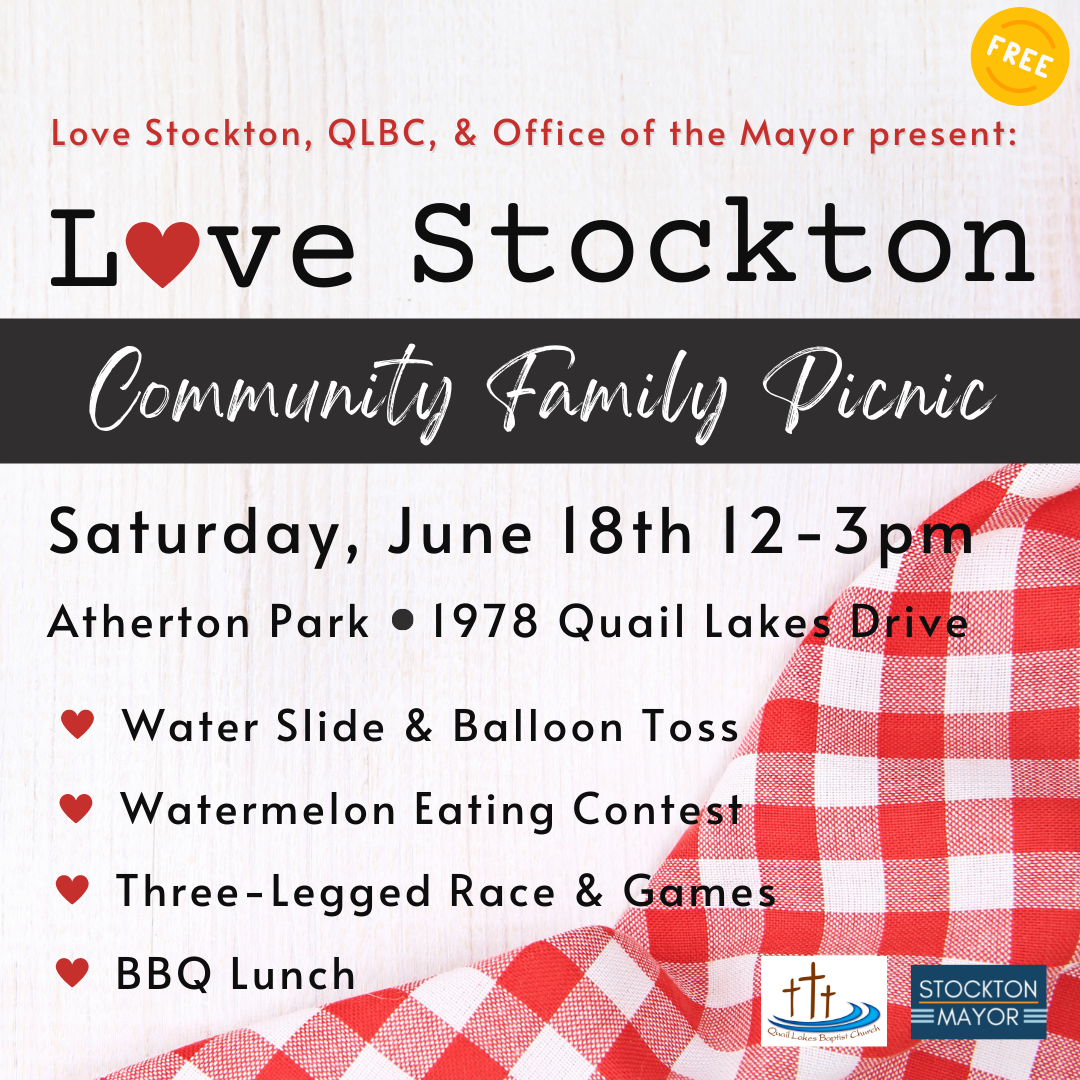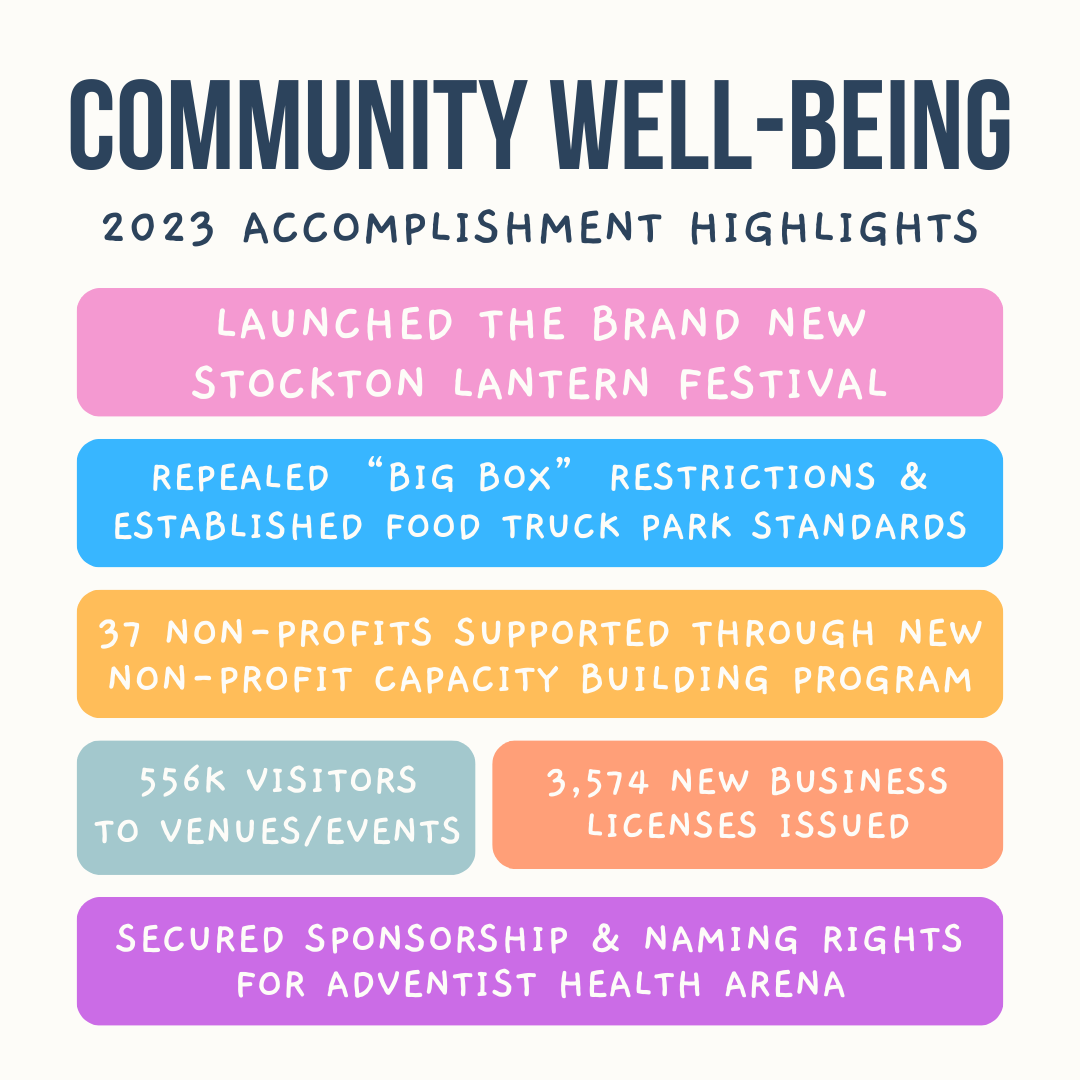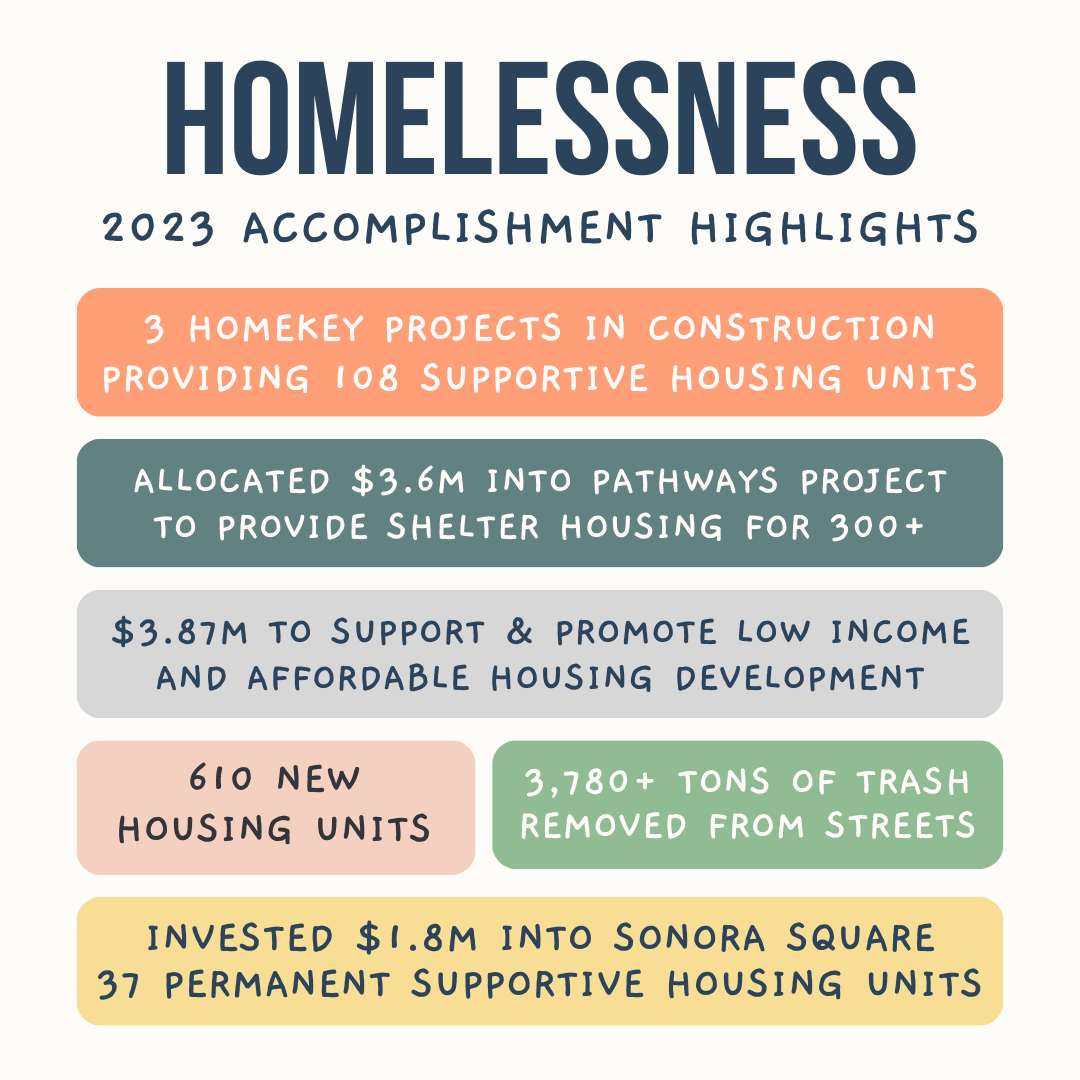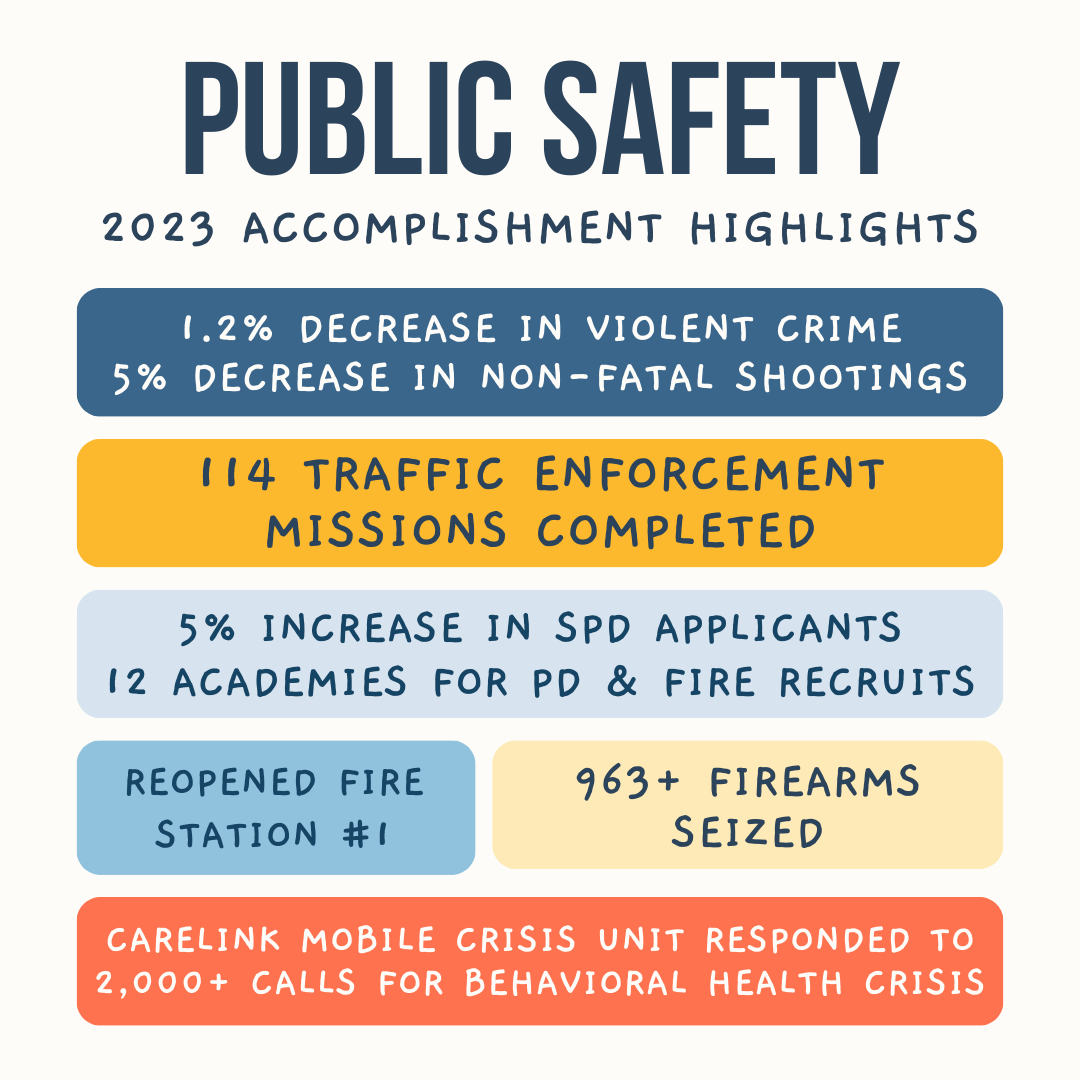Background:
The homelessness crisis in Stockton has been regarded as the most
pressing policy issue facing the city. Stockton City Council, in
conjunction with City Staff, held a Homeless Study Session to
discuss first-step solutions to begin addressing the need for new
shelter innovations.
The people of Stockton have long asked for a seat at the table and
a voice in the decisionmaking process. To provide the public with
this opportunity, a survey was created to capture public
sentiments of specific policies and initiatives. This feedback
will be utilized as an informational component by the Office of
the Mayor in their potential homeless response. All responses were
confidential.
The information below serves as a summarization of the data
collected
Demographic Information
Demographic Information
What council district do you reside in?
- District 1 - Jobrack: 8.6%
- District 2 - Wright: 6.2%
- District 3 - Canepa: 8.6%
- District 4 - Lenz: 10.8%
- District 5 - Fugazi: 10.9%
- District 6 - Warmsley: 6.2%
695 total responses
Note: When adding the percentages, some will not equate to 100%.
This is due to normal rounding error.
POLICY OPTION 1: Safe Camping and Parking Sites
On a scale from 0 to 10, where 0 is 'very unlikely', 10 is 'very
likely', and 5 is in the middle, how likely are you to support
safe camping and parking sites as a homeless solution?
Safe camping and parking programs involve transitioning an unused
part of city or general land into a homeless center. Centers
provide important amenities such as bathrooms, picnic tables,
phone charging, and more. These camping and parking sites will be
monitored to protect against vandalism, theft, and to protect
those using them.
In respect to safe camping, this program would provide a central
location for homeless individuals to set up camp, providing an
alternative to the encampments spread throughout the city. If done
successfully, wrap-around services will also be provided at these
locations.
In respect to safe parking, the program allows those who are
living in their cars to park safely for a period of time and if
done successfully, wrap-around services will also be provided at
these locations.
-
64.5% demonstrate some level of support for safe camping and
parking sites (aggregate from respondents denoting 6 through 10)
-
23.7% demonstrate some level of not supporting safe camping and
parking sites (aggregate from respondents denoting 0 through 4)
- 11.8% demonstrate neutrality
Note: When adding the percentages, some will not equate to 100%.
This is due to normal rounding error.
POLICY OPTION 2: First Time Homebuyer Down Payment Assistance
On a scale from 0 to 10, where 0 is 'very unlikely', 10 is 'very
likely', and 5 is in the middle, how likely are you to support
safe camping and parking sites as a homeless solution?
Down payment assistance (DPA) helps homebuyers with grants or
low-interest loans that reduce the amount they need to save for a
down payment. This assistance makes it easier for first time
homebuyers to purchase a property.
This policy would work towards creating a DPA to support and
stimulate first-time homebuyers with greater ease. The city would
create and provide this program.
-
61.2% demonstrate some level of support for a first-time
homebuyer down payment assistance program (aggregate from
respondents denoting 6 through 10)
-
28.1% demonstrate some level of not supporting a first time
homebuyer down payment assistance program (aggregate from
respondents denoting 0 through 4)
- 10.8% demonstrate neutrality
Note: When adding the percentages, some will not equate to 100%.
This is due to normal rounding error.
POLICY OPTION 3: First and Last Month's Rental Assistance
On a scale from 0 to 10, where 0 is 'very unlikely', 10 is 'very
likely', and 5 is in the middle, how likely are you to support
safe camping and parking sites as a homeless solution?
First and last month's rental assistance programs would provide
greater support for individuals being eligible to enter into
rental agreements. Often, landlords require deposits and first and
last month's rent upfront as a precondition for moving into a
property. This acts a barrier to those who do not have the savings
or resources to put forth towards those requirements.
This policy would work towards providing those who do not have the
ability to pay this lumpsum amount with financial assistance,
thereby increasing the probability an individual will be able to
rent a property.
-
64.3% demonstrate some level of support for a First and Last
Month's Rental Assistance program (aggregate from respondents
denoting 6 through 10)
-
23.8% demonstrate some level of not supporting a First and Last
Month's Rental Assistance program (aggregate from respondents
denoting 0 through 4)
- 11.8% demonstrate neutrality
Note: When adding the percentages, some will not equate to 100%.
This is due to normal rounding error.
POLICY OPTION 4: Low to No Barrier Emergency Shelter Beds
On a scale from 0 to 10, where 0 is 'very unlikely', 10 is 'very
likely', and 5 is in the middle, how likely are you to support
safe camping and parking sites as a homeless solution?
Low to no barrier shelters are facilities that allow easy entry
for individuals. Some barriers that exist at medium to high
barrier shelters include the ability to bring pets, possessions,
and/or partners into a shelter, as well as requirements such as
background checks, sobriety tests, and treatment participation.
Low to no barrier shelters remove barriers like these, and others.
If done successfully, treatment, resources, and wrap-around
services would be available including but not limited to case
management, behavioral health services, rehabilitative services,
and employment assistance.
This policy would work towards increasing low to no barrier
emergency shelter beds for the homeless population to utilize.
-
70.2% demonstrate some level of support for expanding Low to No
Barrier Emergency Shelter Beds (aggregate from respondents
denoting 6 through 10)
-
17% demonstrate some level of not supporting expanding Low to No
Barrier Emergency Shelter Beds (aggregate from respondents
denoting 0 through 4)
- 12.7% demonstrate neutrality
Note: When adding the percentages, some will not equate to 100%.
This is due to normal rounding error.
POLICY OPTION 5: Coordinated Entry/Navigation System
On a scale from 0 to 10, where 0 is 'very unlikely', 10 is 'very
likely', and 5 is in the middle, how likely are you to support
safe camping and parking sites as a homeless solution?
A Coordinated Entry/Navigation System is a process designed to
efficiently match people experiencing homelessness to available
housing, shelter, and services. It serves an initial intake point
where staff can assess the needs of the homeless individual to
diagnose and provide the necessary services and general assistance
more efficiently.
The policy would work towards creating and scaling a coordinated
entry/navigation system. This person-centered approach prioritizes
those who are most in need of assistance based upon an intake
assessment.
-
78.9% demonstrate some level of support for Coordinated
Entry/Navigation Systems (aggregate from respondents denoting 6
through 10)
-
10.6% demonstrate some level of not supporting Coordinated
Entry/Navigation Systems (aggregate from respondents denoting 0
through 4)
- 10.5% demonstrate neutrality
Note: When adding the percentages, some will not equate to 100%.
This is due to normal rounding error.









